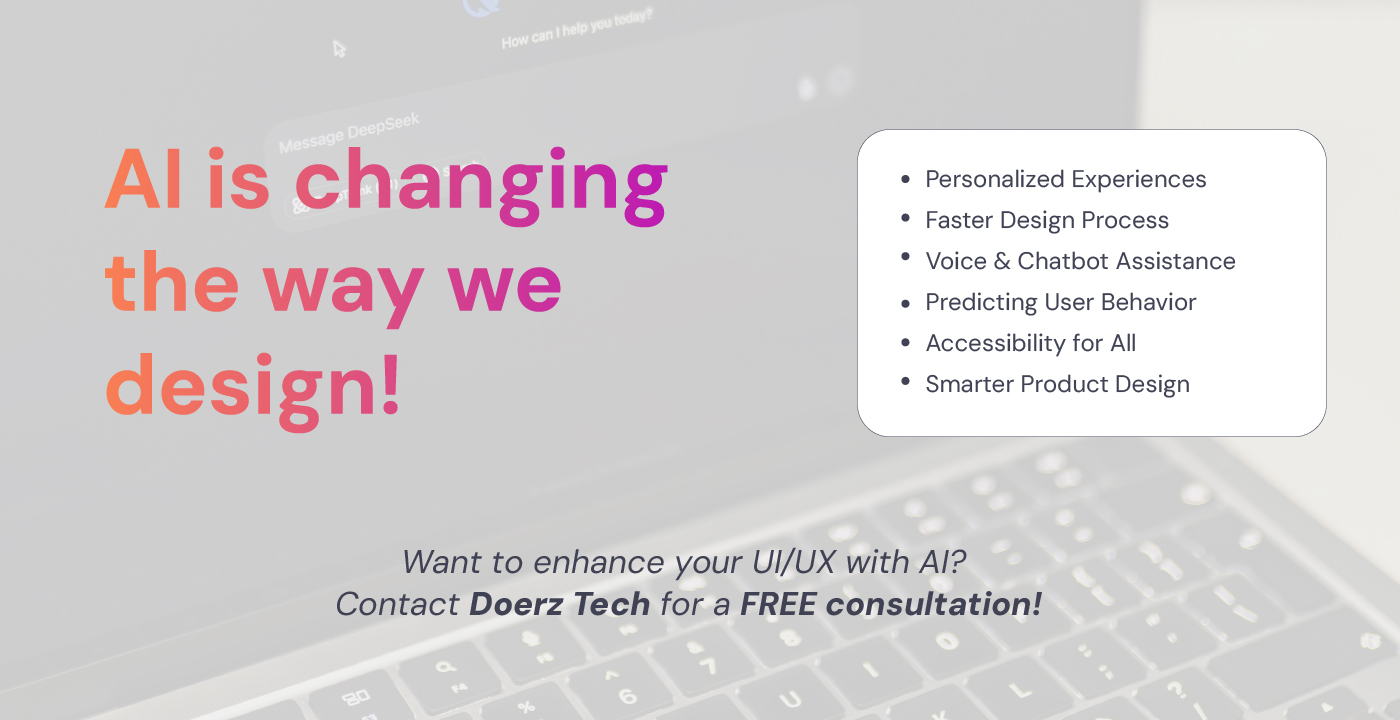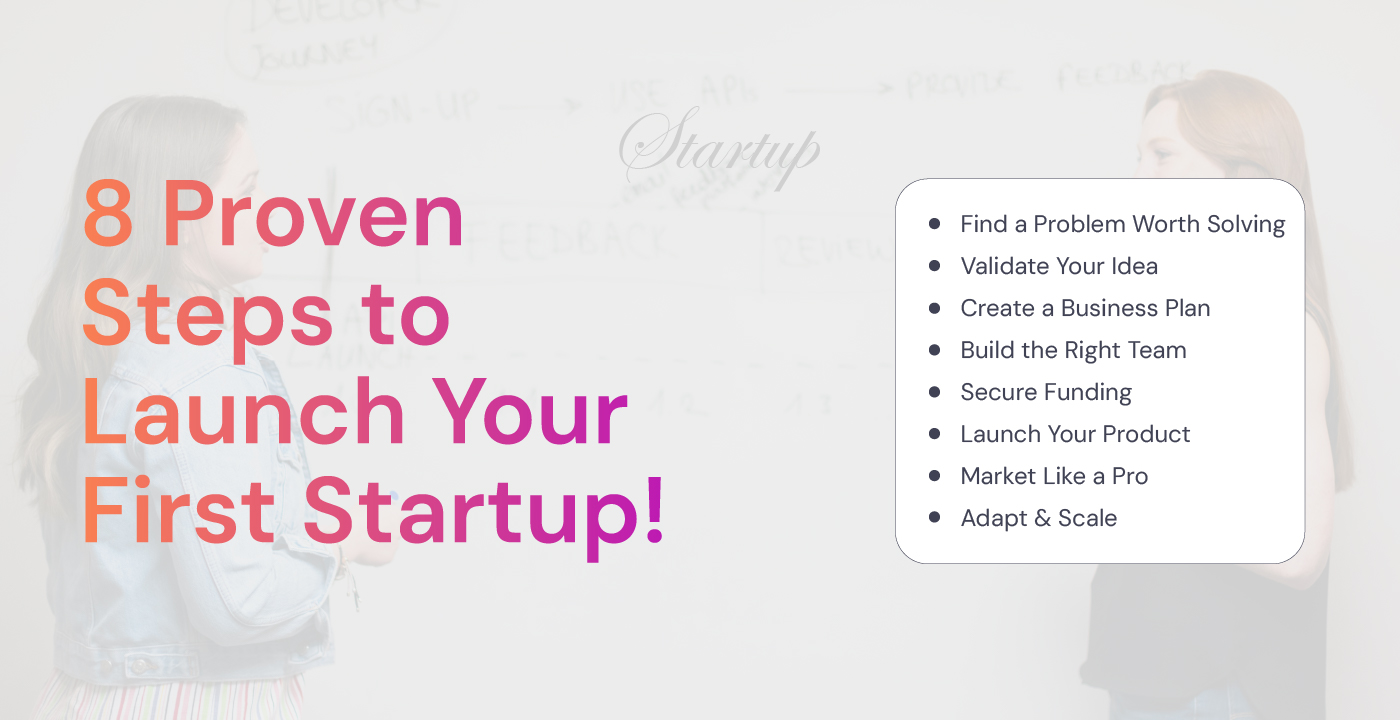AI can predict what users need before they even ask. Yep! From adjusting colors for better readability to suggesting the right menu options, AI is transforming UI/UX and product design in ways we never imagined. It’s not just about automating tasks anymore. The focus is on creating digital experiences that feel personal.
Imagine going to a website that feels like it was made just for you. The colors adjust for better readability. The menus suggest exactly what you need. Forms fill in automatically based on your past actions. This isn’t the future as it is happening in real time; all thanks to AI.
Keep on reading to learn how AI is changing the UI/UI experience for the better.
How AI is Changing UI/UX and Product Design?
AI is transforming UI/UX design by analyzing user data to figure out what works best. It helps designers make better decisions and automates work to enhance user experience.
1. Personalizing Websites and Apps
AI makes websites and apps display things you like rather than random content. It picks up on your previous behavior and actions and recommends what you may want to do next.
Netflix recommends films and television shows based on your past viewing history. The majority of 80% of what users view on Netflix are AI recommendations.
When apps provide you with enjoyment, you stay longer on those apps and like the experience better.
2. Helping Designers Work More Efficiently
Before AI, designers used to create layouts and designs manually. Nowadays, AI tools can easily recommend designs and accelerate the process.
Adobe Sensei and Figma AI help designers in creating wireframes, selecting colors and fine-tuning layouts in a snap.
Designers can now spend less time on boring work and more time focusing on creativity.
3. Voice Assistants for Easy Interaction
AI allows us to talk to devices instead of typing or clicking. Voice assistants like Siri and Alexa understand commands and help with tasks like playing music, setting alarms, or answering questions.
This makes technology easier to use especially when your hands are busy or when you just want quick answers.
It also helps people with disabilities navigate devices more easily, making digital experiences more accessible for everyone.
4. Chatbots for Instant Help
AI-powered chatbots answer customer questions instantly, so people don’t have to wait for a human assistant.
Shopify’s AI chatbot helps customers track orders, find products, and solve problems. AI chatbots can handle 85% of customer support requests without human help.
It matters when businesses can help customers 24/7 while saving money on support teams.
5. Predicting What Users Will Do Next
AI can guess what users might need next based on their past behavior. Google Maps suggests routes, restaurants or places based on where you have been before.
Predictive AI helps e-commerce stores increase sales by 20-30% by showing products users are likely to buy.
AI makes shopping, navigation, and browsing easier by offering the right suggestions at the right time.
6. Making Technology Accessible for Everyone
AI makes digital products easier to use for people with disabilities. For example, Microsoft’s Seeing AI app helps visually impaired users by describing their surroundings out loud. It means they can read signs, recognize objects, and even identify people.
AI ensures that technology is accessible to everyone, not just those without disabilities. It makes the digital world more inclusive and user-friendly.
AI also helps with voice commands and real-time captions which makes technology easier for everyone. As it improves, more people can use digital tools without trouble.
7. Better Looking Websites and Apps
AI can suggest the best colors, fonts, and layouts to make designs more attractive. Canva’s AI tool suggests colors and design elements to make visuals look great.
AI tools can cut design time in half which helps businesses create beautiful websites faster. Good design attracts more users which ultimately makes websites and apps more engaging.
AI can also adjust designs based on trends and keep websites and apps fresh. It means businesses can always have a modern and stylish look without extra effort.
How AI is Changing Product Design?
Beyond UI/UX, AI is influencing how entire products are developed and optimized.
1. Smart Product Recommendations
AI studies user behavior to suggest products people are more likely to buy. Amazon’s AI recommends products based on past searches and purchases and it is helping increase sales by 35%.
Shoppers get personalized suggestions which makes their online shopping easier and enjoyable.
2. Faster Prototyping and Testing
AI helps companies test products virtually before launching them. Tesla uses AI to simulate car performance, predicting issues before real-world testing. It speeds up product development and saves costs by reducing the need for expensive physical tests.
3. AI in Augmented Reality (AR) and Virtual Reality (VR)
AI makes AR and VR experiences more interactive and lifelike. IKEA’s AR app lets users see how furniture looks in their home before buying it.
AR-powered shopping experiences increase conversion rates by 40% which can make customers more confident in their choices.
4. Real-Time User Feedback and Adaptation
AI learns from user behavior and adapts products instantly to improve the experience. Google Search’s AI constantly refines search rankings based on what people are clicking.
Digital products become smarter over time and offer more relevant and accurate results.
Final Thoughts
The future of UI/UX and product design will be AI-driven, where personalization, automation and accessibility come together to build smarter, more engaging experiences.
Now is the time for designers to embrace AI and use it to redefine the digital landscape. Want to enhance your UI/UX design with AI? Contact Doerz Tech for a free 30-minute consultation!
People Also Ask
1. Can UI/UX designers be replaced by AI?
No, designers cannot be replaced by AI. It can only help them work faster by completing boring, repetitive activities like resizing images and selecting fonts. AI cannot take the place of human creativity and insight which are still crucial.
2. In what ways does AI enhance product design?
AI enables businesses to create products more quickly and intelligently. It expedites prototyping, forecasts consumer preferences and even helps in product testing before release.
3. How can I include AI in my design process?
AI-powered design tools such as Adobe Sensei or Figma AI are good places to start. For a free 30-minute consultation, get in touch with Doerz Tech if you want to explore AI for your product.









